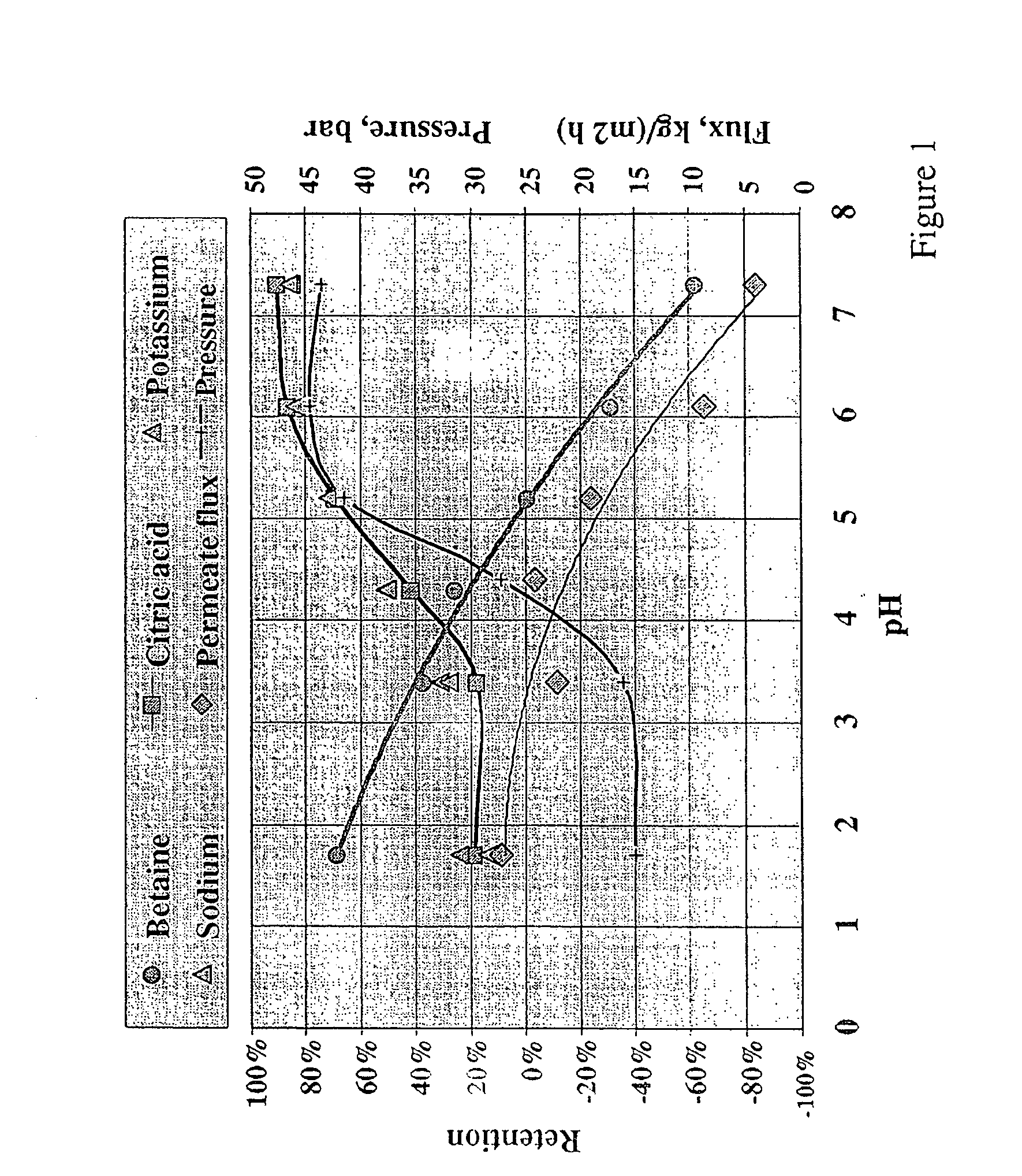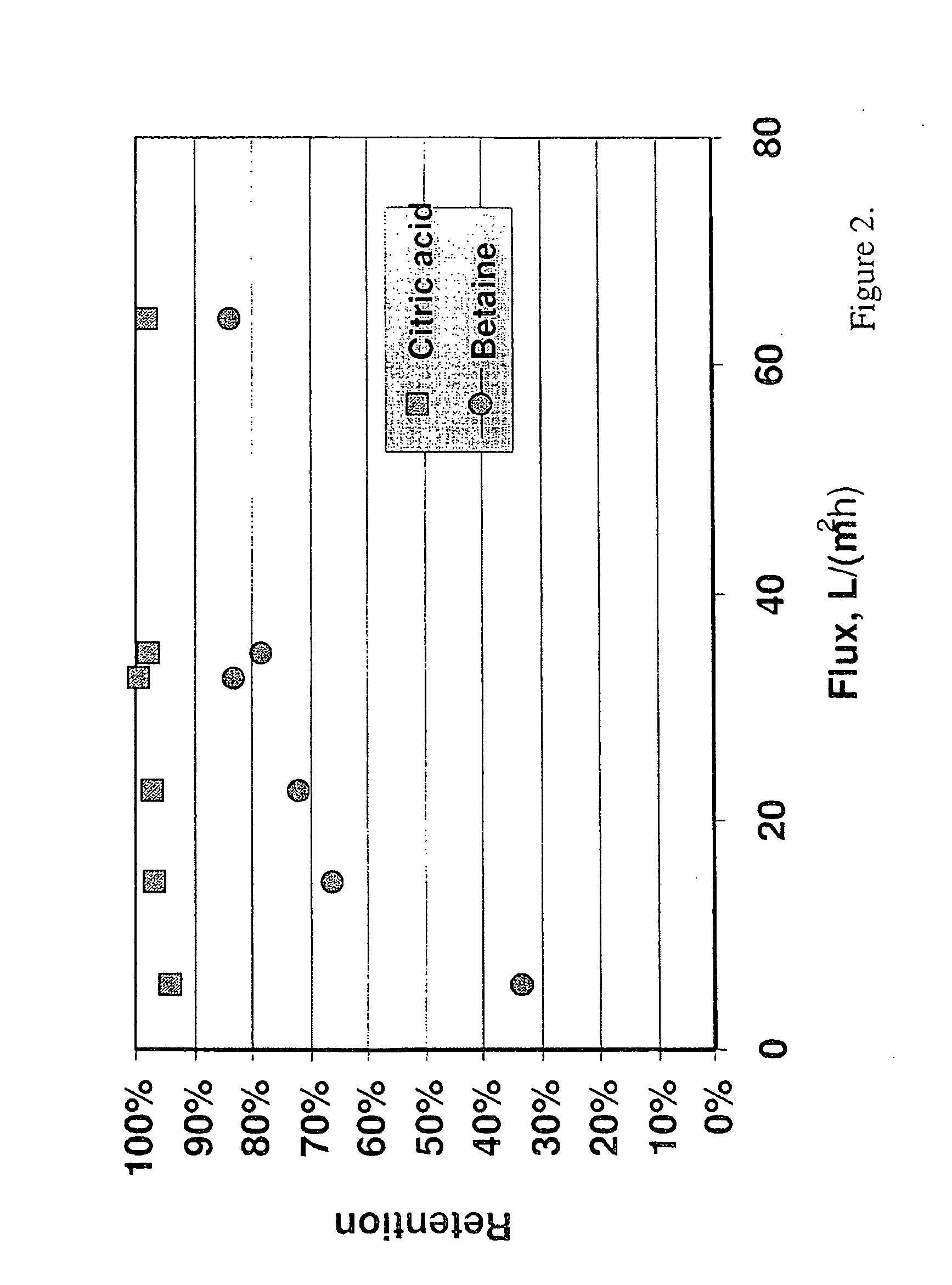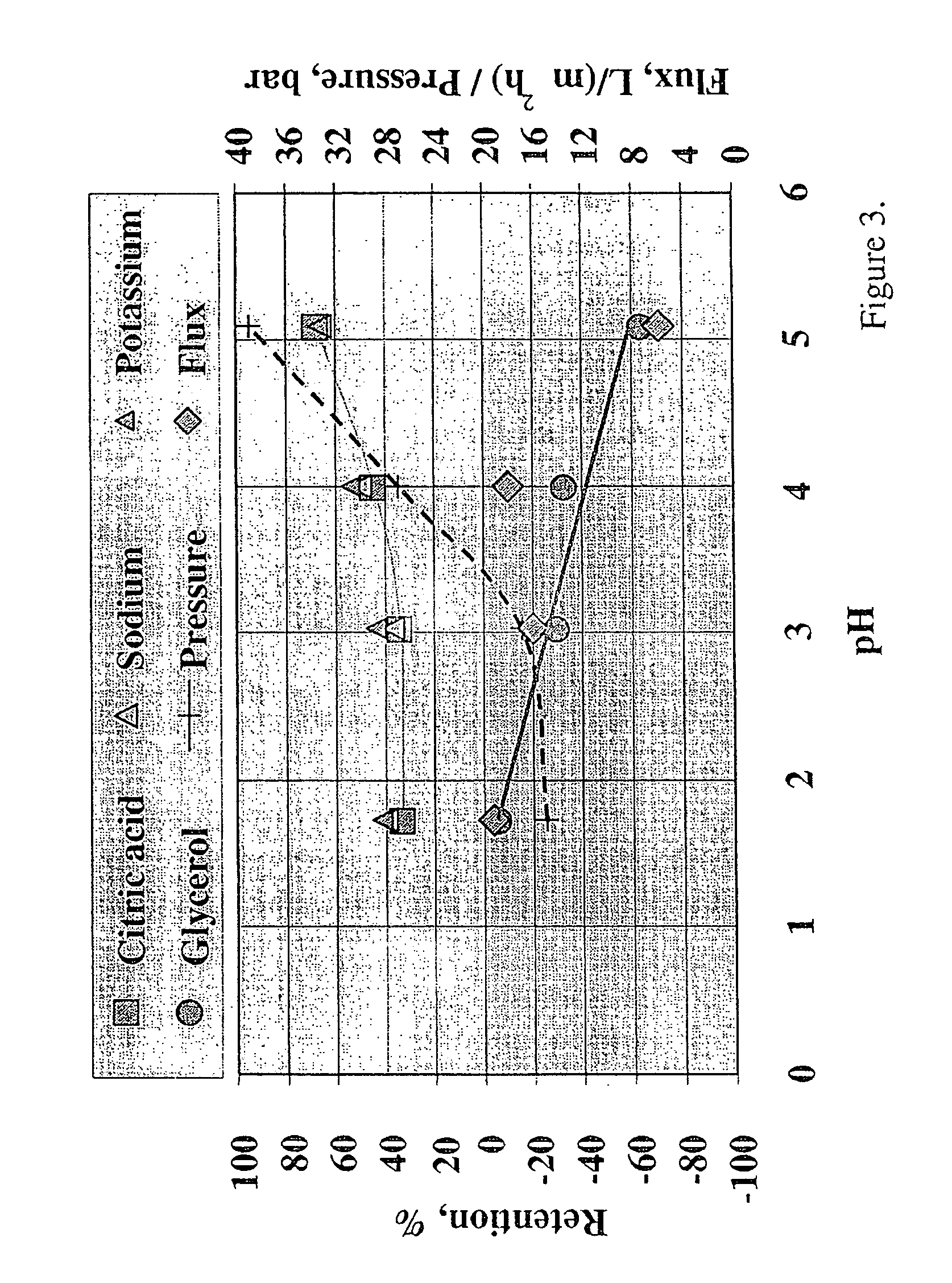Separation Process
- Summary
- Abstract
- Description
- Claims
- Application Information
AI Technical Summary
Benefits of technology
Problems solved by technology
Method used
Image
Examples
example 1
[0072]Two nanofiltration feed solutions were prepared from crystalline xylose and glucose. Dry substance of both feed liquids was adjusted to 30 w-% and two ratios of xylose to glucose were used. In first feed mass ratio of xylose to glucose was 1:9 and in second feed solution mass ratio of xylose to glucose was 9:1.
[0073]These feed liquids were subjected to nanofiltration with DDS Lab-Stak M20 laboratory membrane unit equipped with Desal 5 DL, Desal 5 DK (both GE Osmonics) and NF 270 (Dow Filmtec. USA) membranes. The nanofiltration was done in full circulation mode where all permeate was led back to the feed tank. The experiment was done at two flux levels which were achieved by adjusting feed inlet pressure to 10 bar and 30 bar. Temperature of the retentate was controlled during the test to be at 50° C.
[0074]The permeate fluxes were registered at each point and samples were taken simultaneously from permeate and retentate. Sugar concentrations of all samples were analysed by HPLC ...
example 2
[0077]Xylose containing wood hemicellulose hydrolysate (pH˜3.0) was subjected to nanofiltration. A continuous nanofiltration run was carried out with a nanofiltration pilot unit including three nanofiltration stages in series. The pilot unit was equipped with Osmonics Desal 5 DL 4″ spiral wound membranes and the conditions in filtration were set to 33 bars inlet pressure and 65° C. temperature.
[0078]Composition of the nanofiltration feed solution is described below:
Composition of NF feed solutionDry substance, g / 100 g7.5pH (as is)3.0Xylose, g / 100 g2.3Glucose, g / 100 g1.2Other monosaccharides, g / 100 g3.4Xylonic acid g / 100 g3.5Acetic acid, g / 100 g1.3Mg2+, g / 100 g1.2SO42−, g / 100 g2.1SO32−, g / 100 g0.2K, g / 100 g0.1Others, g / 100 g2.2
[0079]Nanofiltration was operated with 90% xylose yield to permeate and retentate dry substance was adjusted to 26 g / 100 g with water. In the equilibrium conditions final retentate and permeate samples from each three stages were collected. The result including...
example 3
[0081]Nanofiltration of three xylose solutions from different separation steps of acid spent sulphite pulping liquor was carried out. Average compositions of the feed / retentate solutions are shown in Table 7.
TABLE 7COMPOSITION OF THE FEED / RETENTATE SOLUTIONSComposition, % on DSComponentSolution ASolution BSolution CXylose11.520.850.0Glucose1.95.84.1Galactose + rhamnose1.25.03.7Arabinose + mannose1.36.85.0Xylonic acid4.313.66.9Xylobiose0.10.10.0Acetic acid1.81.11.6Salts5.26.94.5pH5.24.24.9* salts are the sum of Na, K, Ca, Mg, SO3 and SO4
[0082]The experimental procedure is shown in table 8.
TABLE 8EXPERIMENTSFeed / retentateDry substance content of thesolution° C.pHpin, barfeed / retentate, %A605.54040→35→30→22→15→11B605.54040→35→30→22→15→11C605.54040→35→30→22→15→11
[0083]The experiments were done at constant temperature and pressure. For each dry substance of the feed / retentate, filtration was run in batch concentration mode for two hours. After the two hours' concentration, all the collec...
PUM
| Property | Measurement | Unit |
|---|---|---|
| Weight | aaaaa | aaaaa |
| Density | aaaaa | aaaaa |
| Density | aaaaa | aaaaa |
Abstract
Description
Claims
Application Information
 Login to View More
Login to View More - R&D
- Intellectual Property
- Life Sciences
- Materials
- Tech Scout
- Unparalleled Data Quality
- Higher Quality Content
- 60% Fewer Hallucinations
Browse by: Latest US Patents, China's latest patents, Technical Efficacy Thesaurus, Application Domain, Technology Topic, Popular Technical Reports.
© 2025 PatSnap. All rights reserved.Legal|Privacy policy|Modern Slavery Act Transparency Statement|Sitemap|About US| Contact US: help@patsnap.com



